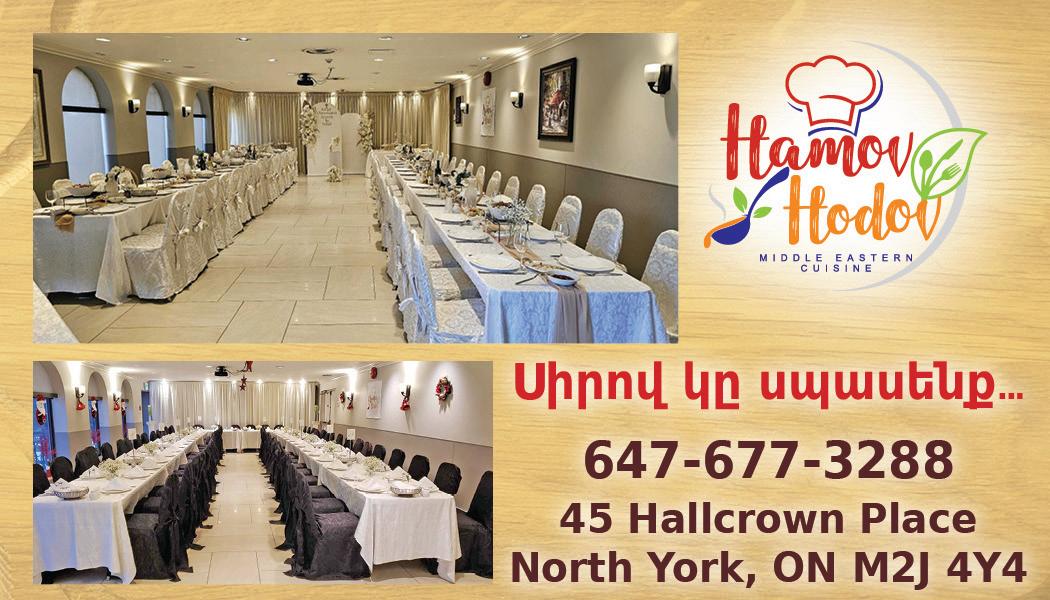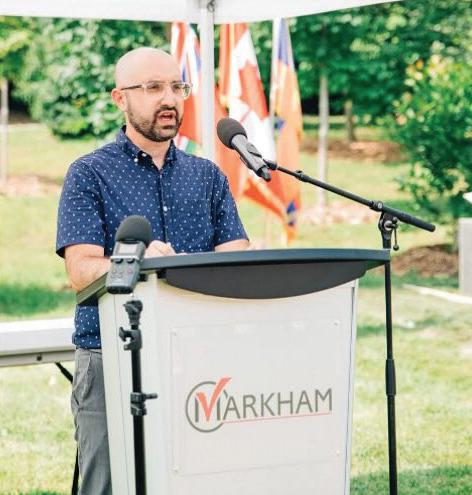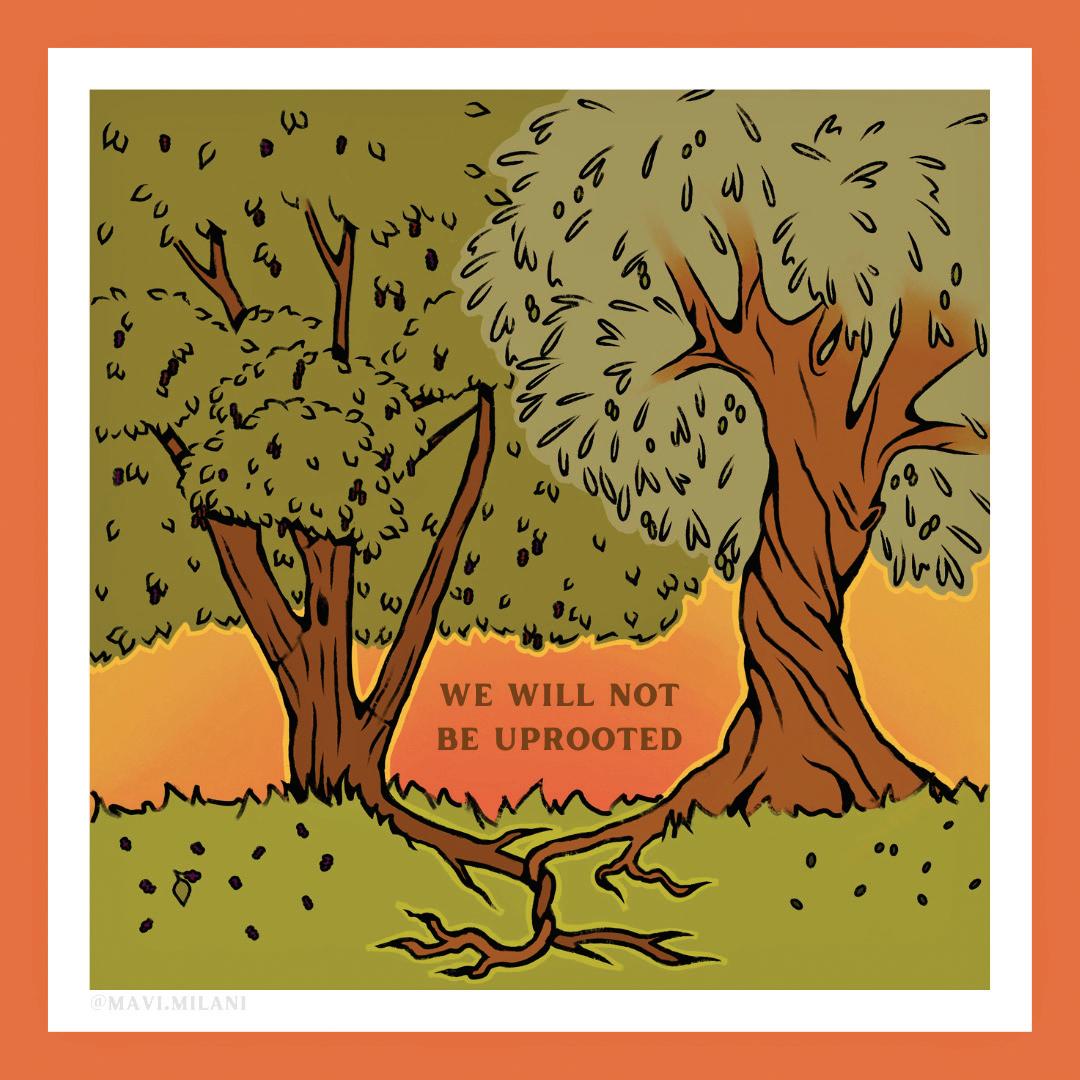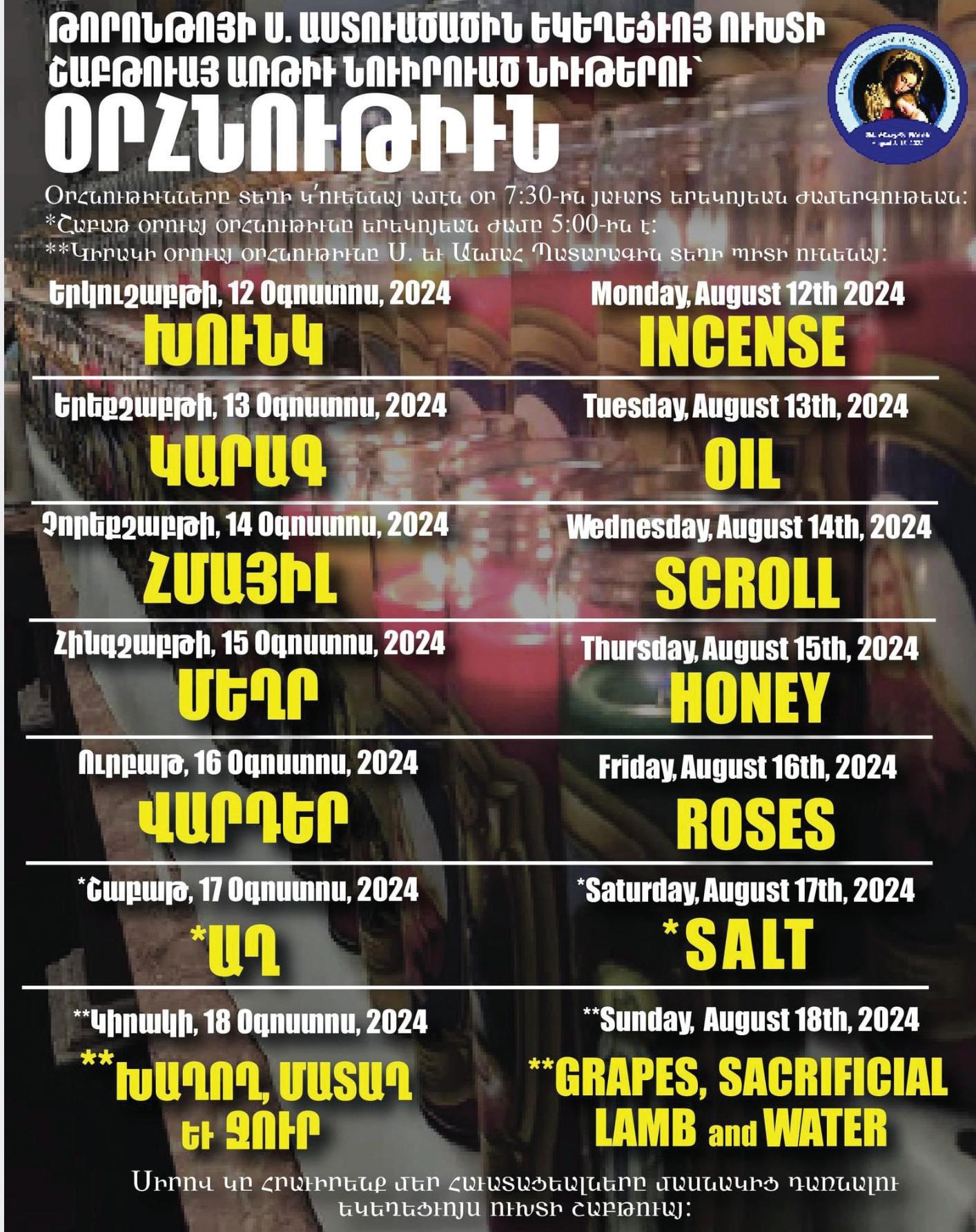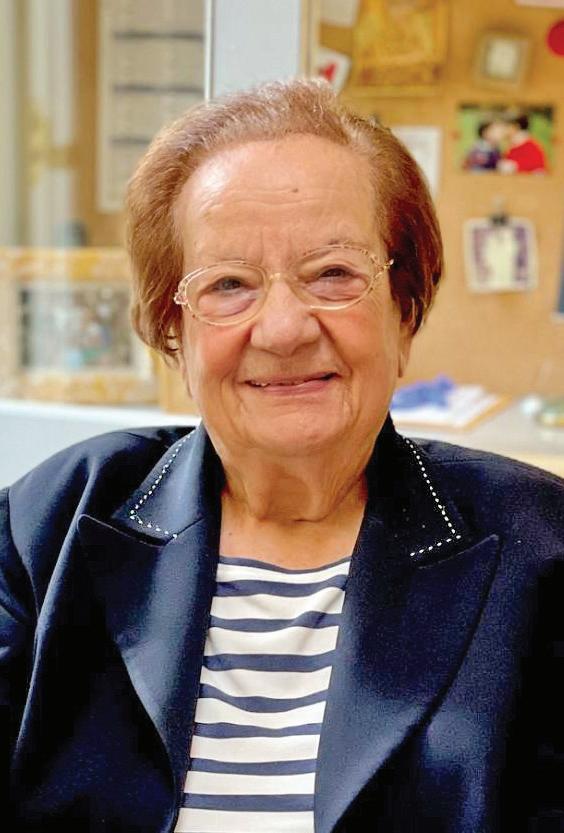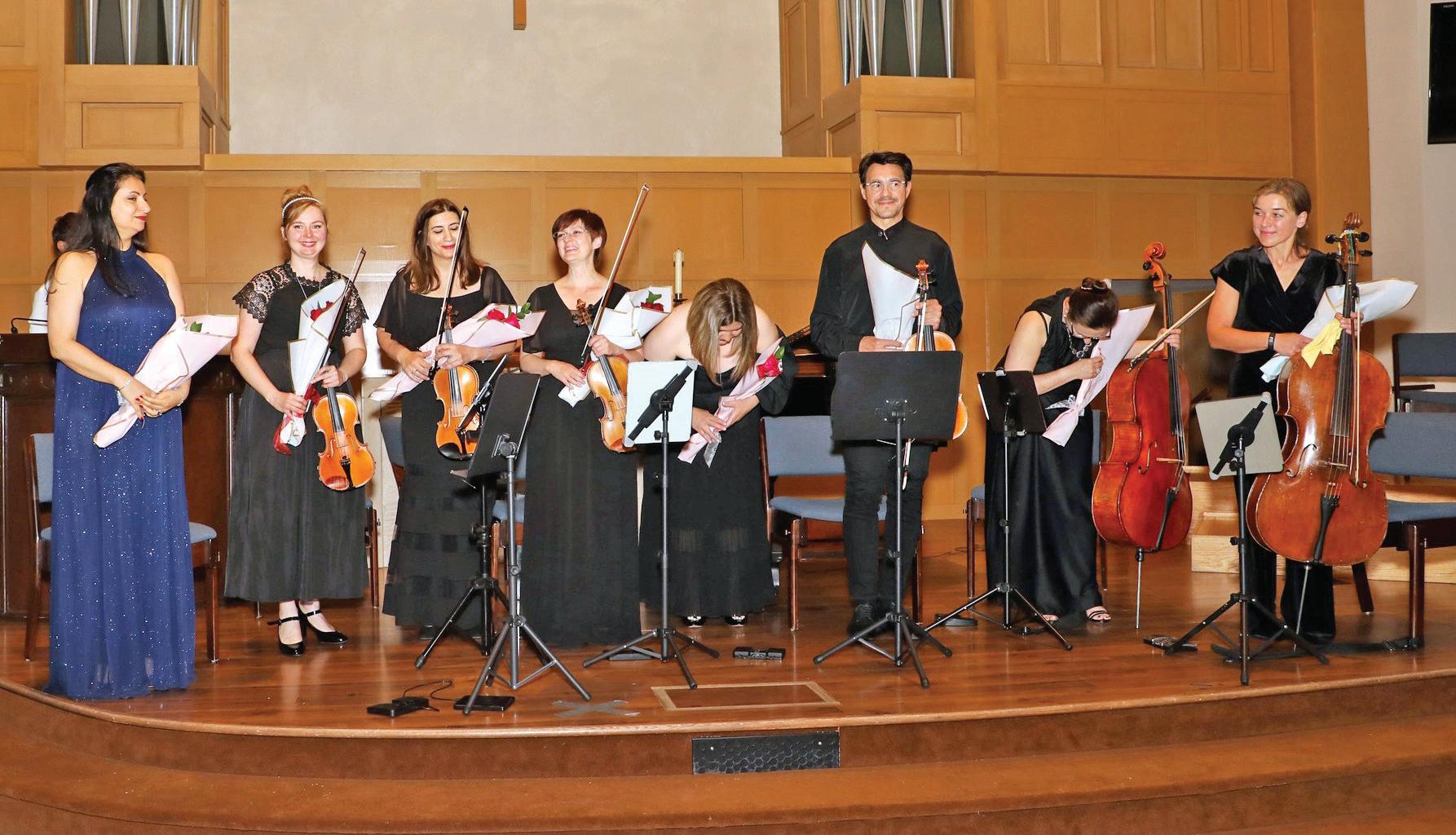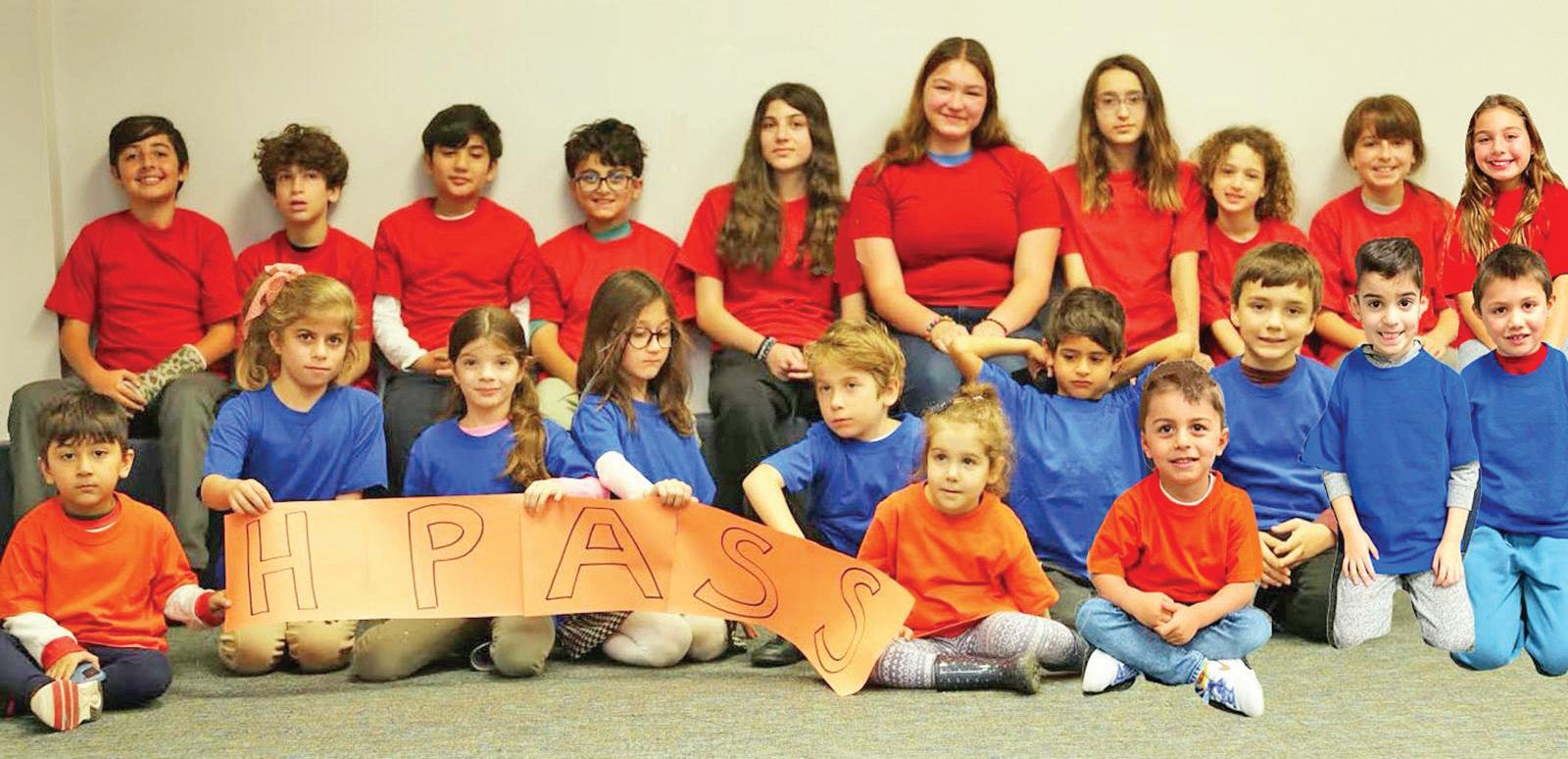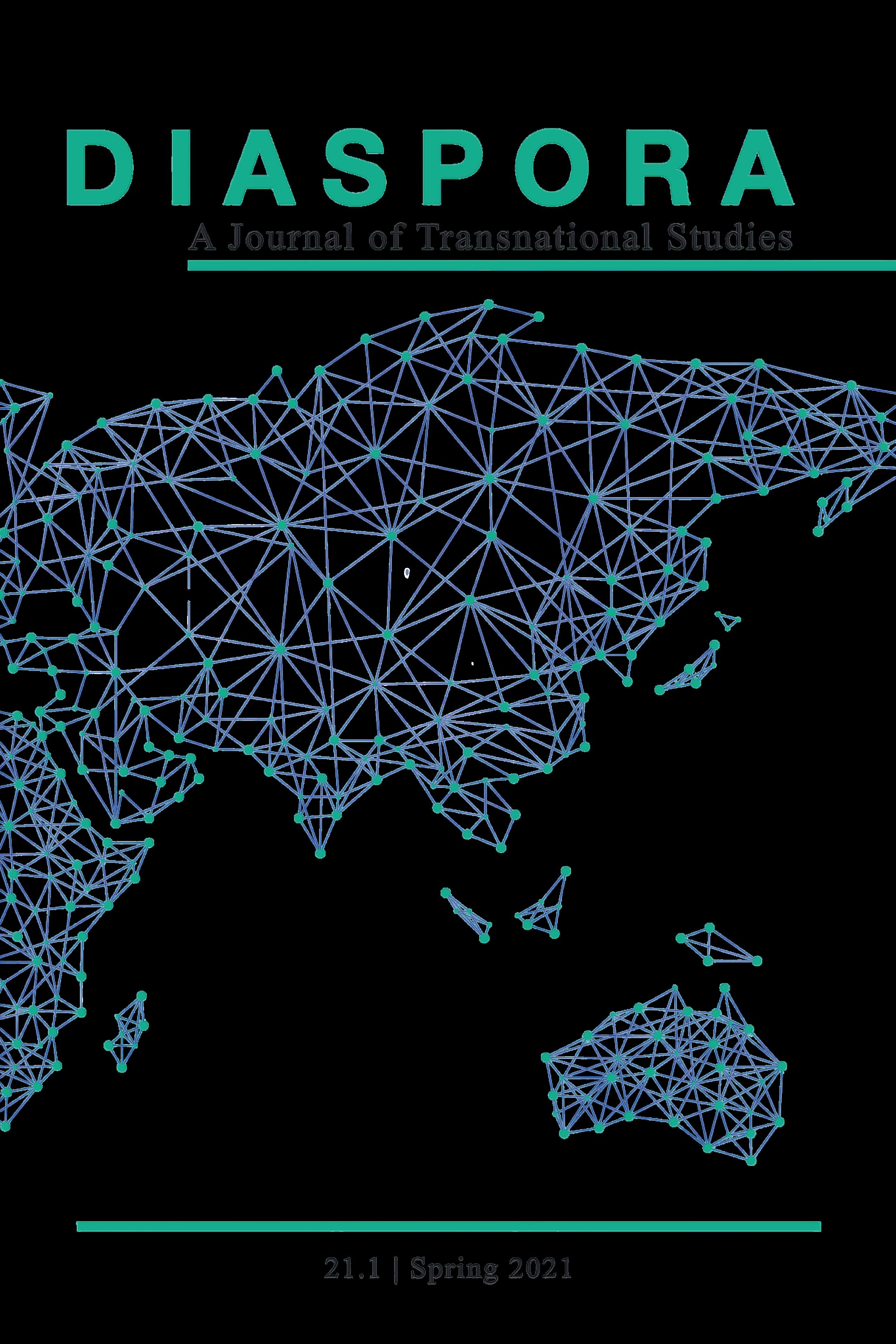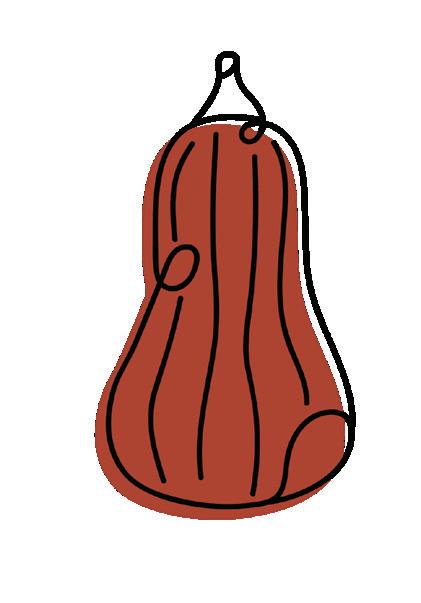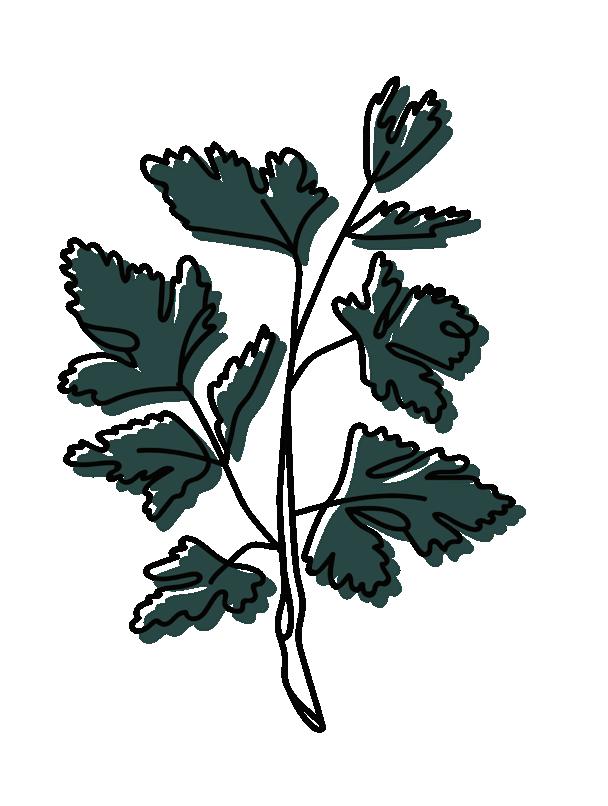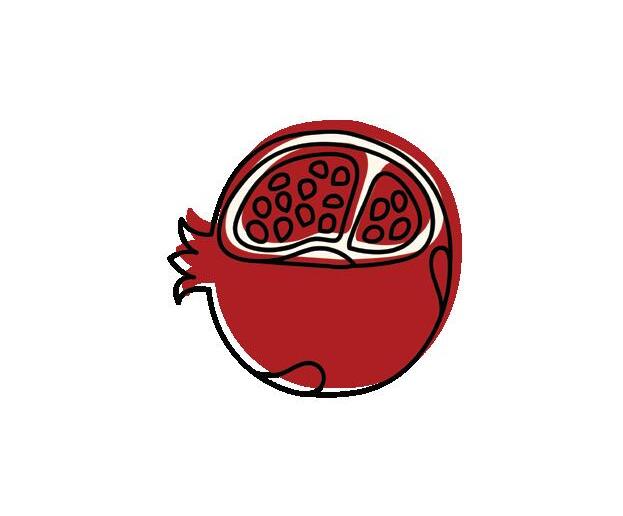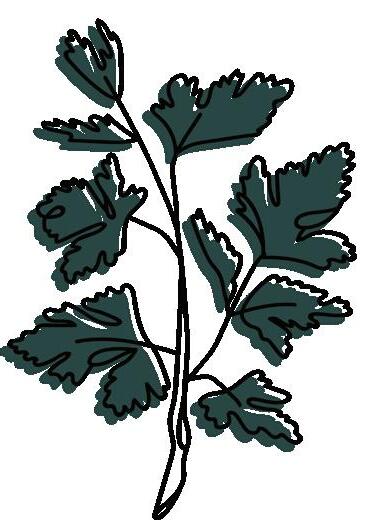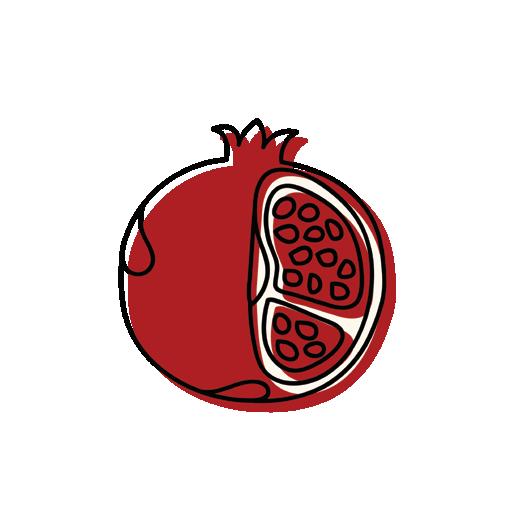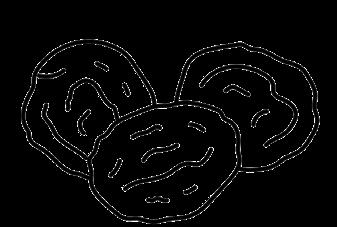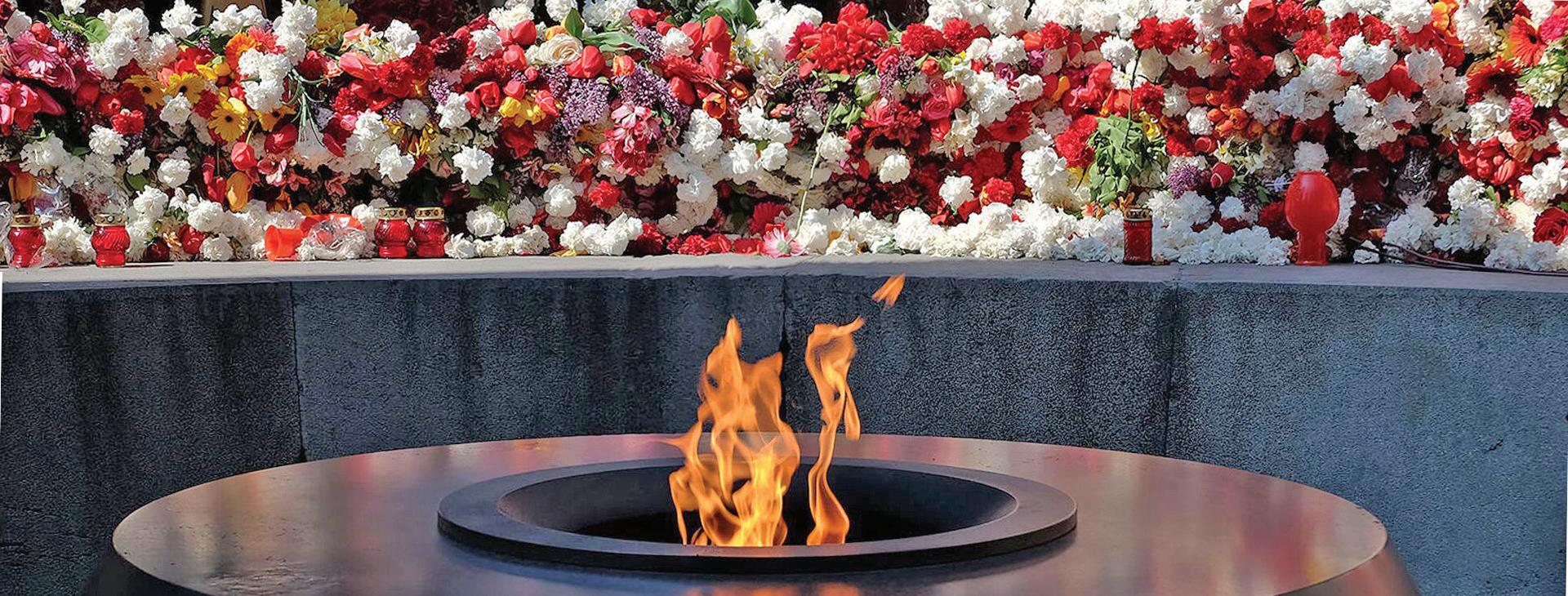By Sophia Alexanian
ing this report into a properly formatted, readable PDF using text recognition software. A few weeks into my work, Learn for Artsakh had already converted the information into shareable infographics.
The infographics took over my feed, and suddenly, it seemed thousands of people were empowered by previously hidden and inaccessible knowledge.
The woman behind the initiative chose to be identified only by her first name, Anahit, due to concerns about online trolls. She is a 22-year-old Artsakhsti with roots spanning across Artsakh. Despite moving to the U.S. when she was six, she maintained close ties with her homeland, visiting Stepanakert every summer. Naturally, when the 2020 War started, she was hit very hard emotionally.
“What can I do in diaspora?” she was left asking. “My heart is pulling me towards Artsakh, but I feel so helpless.” She had noticed a gap in the online information space; there were very few accessible books about Artsakh actually written by Armenians.
Many who were seeking to be educated about the Armenian cause were being referred to Western
writers like Thomas de Waal writers who Anahit described as “profiting off our pain” and engaging in bothsidesism.
It wasn’t that Armenians hadn’t written about
Artsakh–they had writ ten extensively about the Armenian Cause in several languages. However, there were many barriers to ac cessing those books, including high costs and few copies avail able outside major Armenian hubs.
Anahit was determined to change this. In 2020, amid full-time uni versity studies, Anahit set out to the Glen dale Public Library armed with the suitcase. She borrowed nearly two dozen books on Artsakh and carefully scanned them, creating digital copies. The urgency to get information out overruled concerns over copyright laws. This was the beginning of the Learn for Artsakh digital library.
Anahit had also found old websites made by Armenians about Artsakh, with their own collections of books. These websites were fairly inaccessible–for one, they were primarily written in Armenian or Russian. On top of that, they were old websites, made in the early 2000s, before website builders had gained popularity and made it easy to develop and maintain websites. These websites were only accessible through an internet archive called the Wayback Machine. Luckily, Anahit downloaded approximately 500 books on Artsakh from these sites and set to translate them.
Anahit delayed publishing the site due to her perfectionism. She wanted to have a grand launch for the website, with hundreds of books perfectly digitized and translated, but the 2023 Artsakh Genocide rushed her plans, and pushed her to launch the site early.
Despite being published as an ‘incomplete’ site, Learn for Artsakh is a rich resource. The site contains a ‘beginners’ section, intended for those new to the Armenian issues like the 1915 Genocide and struggle for Artsakh’s self-determination, and
an ‘advanced’ section, intended for those seeking to deepen their understanding further. There is also a project recruiting Armenian artists to create new posters and revitalize old ones and an online dictionary of the Artsakh dialect. However, in my opinion, the biggest resource
nian circles, due to a knowledge gap of Artsakhtsi life during Soviet Azerbaijani rule.
Translating Hurunts’ work was deeply fulfilling for Arina. “I like doing my translating work, " she tells me, explaining that it sharpens her Russian language skills. “I sometimes read the stuff in Russian, and I think, ‘This is so important; this is so educational’. I then think of all the Armenians who aren’t able to read it because they don’t read
While exploring the site's origins, I connected with a local University of Toronto student, Arina, who was involved in translation work for the initiative. While she initially downplayed her contributions, they are worthy of being highlighted.
Arina had been involved in Learn for Artsakh since its early days and was keen to build a popular resource for online organizing spaces, something she hoped would be “politically conscious and aware.” Her initial role began as a researcher, researching Armenian revolutionaries and resistance stories. However, her role within the project later evolved to use her knowledge of Russian.
Arina aided in translating a book by Artsakhtsi writer Leonid Karakhanovich Hurunts, entitled Alone with Myself or How to Reach You, Descendants! The English translation of this book is currently available on the Learn for Artsakh website. Anahit highly recommends reading it, and it’s easy to see why. The book is a precious primary source on the Artsakh Liberation Movement, written by one of its early founders. Hurunts documents many instances of violence and suppression against Artsakhstis living under Soviet rule that are not frequently discussed, even in mainstream Arme -
Arina’s translation work extends beyond just translating books. She and another volunteer, Sonya, recently translated Tsvetana Paskaleva’s 1993 documentary “My Dears, Living and Dead” from Russian to English. This documentary on Operation Ring, the forced deportation of Armenians from the Shahumyan region of Artsakh, is available for free with English subtitles on the Learn for Artsakh website. The 15-minute documentary is part of a series of seven documentaries by Paskaleva, a Bulgarian-Armenian journalist who documented the First Artsakh War to draw attention to the gross human rights violations. Paskaleva went on to present her documentaries to the UN, Amnesty International, the Canadian Parliament and the US Congress.
While Learn for Artsakh recruits all kinds of volunteers, including people purely involved in digitizing like I was, translators seem to be the most essential.
Anyone with knowledge of English and another in-demand language (Armenian, Russian, Turkish, Arabic, French, German, Spanish, Georgian) can contribute. Both Anahit and Arina emphasized the flexible environment translators work in, translating a little bit of content at a time.
The initiative was founded as a way for diasporans to contribute from a distance, and the volunteers’ accomplishments are something to be proud of. “There are Armenian stories that need to be told,” says Arina, describing her motivation to join the project. “You do this work for yourself and your community.”
For those looking to support without the time commitment of volunteering, Anahit and Arina recommend taking the time to read and educate yourself using the resources available, and sharing them online. Anahit recommends those new to Artsakh issues read The Caucasian Knot - while the book is not perfect, it provides a good backgrounder to the Artsakh cause. Arina recommended Monte Melkonian’s The Right to Struggle , a book that ties the Armenian cause with other transnational solidarity movements.
Of course, for those truly short on time, the Learn for Artsakh Instagram account manages to dole out detailed information in a digestible, short format. The crowd favourite is an infographic called “A Legal Perspective on Artsakh’s Self-Determination”, which is a great shareable resource. The information shared empowers Armenians and allies to stand firm against the torrent of misinformation caviar diplomacy has brought into legal spaces.
Overall, it is difficult to walk away from the Learn for Artsakh digital library unimpressed. Despite online hate, Anahit and the volunteers march on, making Armenian texts accessible to Armenians and non-Armenians alike. Their efforts contribute to a broader effort to platform Armenian, especially Artsakhsti , stories. To paraphrase a sentiment in my conversations with both Anahit and Arina: “When there’s a targeted campaign to deny your existence, education becomes a form of resistance.” ֎
Images: pg. 6 - the first submission to Learn for Artsakh's new initiative, the Artsakh Poster Project, entitled ' We will not be uprooted'; spread - the crowd favourite infographic called 'A Legal Perspective on Artsakh’s Self-Determination,' featured on Learn for Artsakh's social media channels.
From the editor
Torontohye does not necessarily endorse or evaluate the products, services, or companies advertised. The opinions expressed in this publication are those of the authors. They do not purport to reflect the opinions or views of Torontohye. The reproduction of the material contained in this publication may be made only with the written permission of the publisher or editor. All submissions are subject to editing for space, style, and clarity.
ճկունութեան,
հաշուագէտ է FCPA եւ կը կրէ ICD.D տիտղոսը` Haventree դրամատան տնօրէն մարմնին, ինչպէս նաեւ՝ Ontario Shores Centre Մտային
հիւանդութեանց ծառայութեան կեդրոնին: Աշխատանոցին ընթացքին Անի Հոթոյեան Ժոլի բացատրեց, որ
պատկանելիութեան, հաւասարութեան, բազմազանութեան, ներառման սկզբունքներու վրայ հիմնուած ընկերութեան մը մէջ կ'ապրինք: Հետեւաբար
(1931-2024)
«Թորոնթոհայ»-ի
կազմը իր խորազգաց ցաւակցութիւնները կը յայտնէ Գլոլոլեան,
We are profoundly saddened by the passing of one of the cornerstones of the Armenian community in Toronto, Mrs. Armenouhi Kololian (1931-2024). She was a benefactor, philanthropist, volunteer, and longtime reader and supporter of Torontohye newspaper. On behalf of Torontohye/Թորոնթոհայ's editors and staff, we extend our heartfelt sympathies to the Kololian, Shahinian, and Artinian families, Mrs. Kololian’s loved ones, and the Armenian community as a whole. Below, we present a collection of letters of condolences, eulogies, and personal reflections dedicated to Mrs. Kololian’s memory.
The memory of the just is blessed.
In celebration of Armenouhi Kololian’s life–a life well lived
By Vahan Kololian*
I am Vahan Kololian, and I stand before you as the proud son of Armenouhi Kololian.
Armenouhi’s life, her 92 years, is a life exemplified by love, courage and service. I was eight years old, and my sister Nairy was four when our parents boldly decided to leave Egypt and immigrate to Canada.
For us, it did not seem to pose a hardship. Instead, our parents made the move feel like an adventure. Arriving in Toronto in July 1962 at the ages of 32 and 30, they managed to settle, find a place to live, and get us enrolled in school. There were many other things to organize—getting a driver’s license, for example.
Mother recently regaled us with the story of her driver’s test. Apparently, she took it upon herself to tell the examiner, “Look, I am a good driver. But don’t ask me to parallel park; where we come from, we leave the car in the middle of the road, and men park it in exchange for tips!” Her charms only went so far. She had to take the test a second time.
In what seemed like a short time, our father had started a business in a tiny 600 sq ft plant—K.K. Precision Parts. This is where the love and courage come in. I distinctly remember my mother’s encouraging and loving words supporting Father in taking the step and starting the business.
And soon, words became deeds when Mother became active in the business, doing all manner of work as was required.
Soon thereafter, they moved the business down the street to a slightly larger plant and bought a small bungalow across the street.
Those years were magical. Nairy and I would come home for lunch from school, as would Mother and Father from the plant. After lunch, we would return to school, and they would return to K.K. Precision across the street.
As always, Mother was the connective tissue of the family, seamlessly operating as a business partner while also being a full-time Mom. Mother also taught French part-time in the Toronto School system during the first few years in Canada.
As though her work and family life were not busy enough, Mother took on the work of co-founding the Toronto Roubina chapter of the Armenian Relief Society (ARS). The ARS Chapter grew immensely.
Then in 1979, Kevork and Armen became the cornerstone donors to establish the ARS Kololian Elementary School. This year, the school celebrated its 45th anniversary. Mother took great pride in attending every one of the opening days of the school, not having missed a single one, including the most recent school year.
In addition, during the school’s initial ten years, Mother served as its Treasurer, managing its finances. As the old adage goes, if you need to get something done, give it to a busy person.
In the many activities Mother pursued over the years, she built a very large circle of friends. These friends were present until the end, especially her Armenian Relief Society sisters. Mother also had the good fortune of having very thoughtful caregivers. We are grateful for their care and diligence. Our family took care of Mother’s needs, but as her health started to fail, I must point out that my sister, Nairy, has been a stalwart, going over and beyond the call of duty, which we all appreciate immensely.
As a family, we have also been very fortunate to maintain friendships from our days in Egypt. The greatest example of this is Reverend Tootikian, our pastor in Cairo, who is here with us today. Badveli Tootikian and his family settled in Detroit when we came to Toronto from Egypt. Reverend Tootikian has been present at many of the Kololian’s milestone events. Badveli, we appreciate you making the effort and being here on this day of celebration of Mother’s life. We appreciate Der Mikaelian and the staff of St. Mary’s Apostolic Church.
As the years went by, Nairy married Yervant and Susie and I were married. I often heard from our spouses as to how fortunate they were to have such a great mother-in-law. As the next generation arrived, Armen was fully committed to being the lives of her grandchildren. They all carry many of the fine attributes of their grandmother. I think it would be fitting to say let’s celebrate the life of an amazing woman, a life well lived. ֎
*Vahan Kololian delivered this eulogy at Armenouhi Kololian’s funeral, which took place on July 9, 2024, at the St. Mary Armenian Church of Toronto.
Community Service is taught at the dinner table: In memory of my Grandmother
By Krikor Shahinian*
Community Service is taught at the dinner table.
My grandparents made the journey to Canada in 1962, leaving the lives they had led in Egypt behind. They did not look back. They were young with a new family, strong ambitions, and landed in our city. Quickly, they established a business, started earning incomes, enrolled the kids in schools, bought their home, and new life would begin to take form. Pretty soon, they would get involved in the Armenian Community, a burgeoning group of energetic immigrant families similar to them, hungry for their common language, culture, foods, etc.
A few years later, with some solid family growth, a successful business underway, and a growing community around them making their decision to come to Toronto more and more wise, my grandparents would undoubtedly start brainstorming about how to build the community and life around them further. I can picture their dinner table, the four of them, Kevork, Armen, Vahan, and Nairy, sitting and having a meal, discussing their day and goals, and so forth, but then always making part of the agenda to ask, what project could they dream of that would bolster Toronto’s Armenian community and help take it to new heights.
As many of you know, the Armenian community gathered at a rental property near Avenue and Dupont. For many years, there must have been great times, memories, laughs, and the growth of our culture on those grounds. But it was time to expand, so hundreds of dreamers came together with the plan to acquire and build the Armenian Community Centre of Toronto at 45 Hallcrown Place.
Today, we stand on the very grounds of what people dreamt of building—for us. Many of these dreamers are in attendance today. They brainstormed around their respective dinner and meeting tables and came up with plans for this magical place. Since then, the agoump has grown significantly, and we have all contributed to seeing and enjoying its continuous progress.
Going back to the Kololian dinner table for a minute, my grandmother was most proud of two things: her son and her daughter. Unsurprisingly, they grew up, and all those conversations and brainstorming sessions about volunteering and supporting your community around a fresh pot of dolma paid off.
My uncle Vahan recently capped off the Mosaic Institute, a not-for-profit that aims to dismantle prejudice and promote Canadian diversity. For this work and decades of philanthropic service, he was awarded the Order of Canada in 2021, one of Canada’s highest civilian honours. He and my aunt, Susie Kololian, continue to support many initiatives today.
My mother, Nairy, has taken on many chairpersonship roles in the agoump. She chaired the school board at ARS Day School and was Vice-Chair of the ARS Central Executive. In the early 2000s, Nairy also chaired the principal fundraising campaign of the Armenian Community Centre. Her team achieved their target one year ahead of schedule. This success helped pave the way for the purchase and development of 55 Hallcrown Place grounds, which today serve as our wonderful Lapoyan High School, Hamazkayin Auditorium and Homenetmen Gymnasium.
So, this part of my grandmother’s legacy will be present with our boys for years to come. To have conversations about community and volunteerism, in any capacity, at the dinner table with our children. To ask them, what do you think we need more of, playgrounds? How can we do that? How much does it cost? Who is going to do the work? Any pros and cons? And with our continuous efforts and their minds cultivated to build and grow for the broader community, who knows where it takes us?
*Kirkor Shahinian delivered this eulogy at Armenouhi Kololian’s funeral, which took place on July 9, 2024, at the St. Mary Armenian Church of Toronto. → 14
Armeniouhi Kololian: An exceptional member of our community
Dr. Isabel Kaprielian-Churchill
The Armenian community lost a stalwart member when Armenouhi Kololian passed away on July 4, 2024.
Many are the eulogies written and spoken in her honour. I do not pretend to compete with so many beautifully expressed thoughts for this remarkable woman. However, I am compelled to add a few heartfelt words.
Armenouhi was my dear and beloved friend. Her mother, Dikranouhi Artinian, was also my dear and beloved friend. Her daughter, Nairy Shahinian, is also my dear and beloved friend. How fortunate I am to have been and to be close to three outstanding women from three different generations of the same family!
I met Dikranouhi and Armenouhi in 1974 when I joined the Armenian Relief Society (ARS). It was a very sad time for me as I had lost my mother that year. In her memory, I continued her legacy by joining the ARS since my mother had joined the Garmir Khatch in 1934 when General Njdeh visited Hamilton. Digin Artinian took me under her wing and treated me like her own daughter. If, during a conversation-and there were many--my tears and grief welled up, she would console and comfort me. I was lucky to have such a compassionate, thoughtful friend and mentor.
In cooperation with the ARS, Digin Artinian was one of the founders of the ARS summer school and was its first principal in 1970. She encouraged me to send my three children to the new school. My youngsters were hesitant as they did not speak Armenian. Digin Artinian was kind and patient with them, as were all the teachers at the school, especially Houri Najarian. My youngsters looked forward to going to Armenian school and adored Digin Artinian.
Our friendship blossomed and I grew to love her dearly and deeply until her death in August 2001. In the meantime, I got to know her daughter, Armenouhi. It would have been too much to expect me to find the same warmth, friendship, and love with two women of the same family, but that is precisely what happened. Armenouhi became a trusted and sincere friend. How fortunate I have been!
Armenouhi was one of the visionary women to revive the ARS in Toronto. The Toronto chapter was originally founded by a group of refugee women in the 1920s, but after they died, the chapter withered away. The new wave of women revived this women’s organization in 1963-4 and brought their intelligence and diligence to make it the dynamic organization it is today with about 400 members.
Following in her mother’s footsteps, Armenouhi was dedicated to educating Armenian children. How exciting it was when Kevork and Armenouhi Kololian, in cooperation with the ARS, led the campaign to build an Armenian full-day school in Toronto in 1979--the first in Ontario! Their family’s support of the Kololian Elementary School has never faltered.
Financial donations are, without question, vital. So is hard work. For 12 years, Armenouhi volunteered as the school treasurer, which was a formidable challenge, considering the school was a new, ambitious, and unprecedented venture. Armenouhi was determined to make it a success. Not only was she courageous and fearless, but she was also far-sighted. Her work and her diplomacy to generate support for the school have contributed to its growth with an enrolment today of over 650 children, including those kiddies in the Babayan Kindergarten and the ARS Roubina Nursery.
Armenouhi passed the torch on to her daughter Nairy--my dear, sweet friend Nairy: daughter, sister, wife, mother, and grandmother. Like her mother and grandmother before her, Nairy is a pillar of the ARS Kololian Elementary School, where her daughter Hasmig, a teacher herself and school administrator, has enrolled her two daughters. Yes, the torch is passing on. Dikrnaouhi would be thrilled that her great-great-granddaughters, Lenya and Karnie, are attending the Kololian Elementary School, where her vibrant spirit still resonates.
Following family tradition, Nairy and Hasmig continue their commitment to the Roubina chapter of the ARS and, indeed, beyond, for Nairy also served as Vice-chair of the ARS Central Executive Board from 2011 to 2015.
My friend Ida Fansabedian and I visited Armen and Nairy in June 2024. We chatted, laughed, regaled each other with stories from the past, enjoyed delicious delicacies, and had a memorable afternoon together. Alas, it was the last time we
saw Armen. My heart aches for her pain and suffering. Now, we all wish her eternal peace. We have been blessed by knowing and loving this exceptional member of our community.
May the good Lord illuminate her soul.
AGBU’s charity concert delivers an unforgettable musical experience
On Friday, July 5, 2024, the Armenian General Benevolent Union (AGBU) of Toronto hosted a charity concert at the Lawrence Park Community Church to raise funds for its Global Humanitarian Relief program. The event showcased the remarkable talents of eight musicians: Lilit Zakaryan, Katya Janpoladyan, Shushana Hakobyan, Olga Petrashkevich, Ivan Samozvantsev, Zhenya Kobylyanska, Olga Kostianiuk, and the award-winning soprano Kristina Davlatyan.
The concert featured a diverse repertoire, including Armenian, French, Italian, Spanish, and classical music. The musicians captivated the audience with their skillful performances, creating an emotional journey through their music. The high ceilings of the church provided excellent acoustics, enhancing the enchanting experience for all attendees.
The evening concluded with a heartfelt moment as the audience joined Davlatyan in singing ‘Yerevan-Erebuni’ a beloved song from their youth. The event was a resounding success, leaving the audience in awe of the musical talents on display and the universal language of music that transcends words.
An audience member shared their thoughts on the concert, saying, “[The concert] was pure magic–a rare combination of great music, amazing musicians, and beautiful audience synergy. Bravo! What a lovely performance and for such a wonderful cause.”
In a statement published on its social media channels, the AGBU extended its gratitude to the musicians and participants who made this first-class musical event possible. ֎
A National Research Centre and Diaspora Studies
In the late 1970s, a small group of Armenians absorbed with questions about their history, their identity, and their future as a nation, concluded that there was a crucial need for a place to think critically about the Armenian reality. These individuals, propelled by deeply felt intellectual concerns and compelled by a strong desire for change, set about to conceptualize an institution that would provide a forum for free and critical thinking about contemporary issues affecting the Armenian people through an analytical, scholarly, and detached process. This forum would facilitate intellectuals and the community at large to raise substantial questions about contemporary Armenian history and identity and would help to develop new perspectives on vital issues, both current and future. Among its primary goals would be for the Armenian people to express their history in their own voice and to define themselves, to understand the forces and factors that have brought them to where they are today, and to help the education and involvement of the people in a higher level of discourse without claiming to have all the answers. This process would include the continuous, systematic re-examination and re-evaluation of their reality.
In 1982, this small group of Armenians founded the Zoryan Institute with the goal of conducting out research and documentation in three areas that were either neglected or not studied with sufficiently high standards of scholarship: Genocide, Diaspora, and Armenian Studies.
The modern Armenian diaspora is shaped by key events which have caused waves of emigration, namely the 1915 Genocide committed by the Ottoman Empire, the events of WWII, and the collapse of the Soviet Union. Today, over two-thirds of the Armenians live outside of Armenia proper, dispersed across North America, Latin America, Europe, and the Middle East. With such a large diaspora, it was critical to understand the phenomenon of diaspora as a foundational point of reference, collective diasporic concerns, and local experiences across the various diaspora centres. Issues such as assimilation, loss of language, intermarriage, preservation of culture, and the struggle for genocide recognition were all shared concerns across the Armenian diaspora.
A number of questions emerged when examining identity within the diaspora: What does it mean for a diasporan Armenian to be Armenian when they have not lived in Armenia for generations–in some cases for centuries? What are the markers of Armenian identity — language, religion, a nation-state? Can one have multiple cultural identities, and if sohow do they interact? Is one cultural identity dominant, and if so, what are the implications of this dominance? Finally, what is the role of the diaspora in Armenia’s future as an independent nation and homeland?
In search of answers to these questions, Zoryan engaged its diaspora studies division in several projects, programs, and publications to further expand the existing scholarship on diaspora through the comparative study of other diasporas. One of Zoryan’s initiatives was the establishment in 1989 of the academic journal of Diaspora: A Journal of Transnational Studie s where the Institute’s founding members entered into a contract with Oxford University Press, investing $125,000 (valued at approximately $500,000 today). Diaspora received critical acknowledgement of its content (Best New Journal, Council of Editors of Learned Journals’ International Awards Competition, 1991). The journal was conceptualized by Professor Tololyan of Wesleyan University, who managed as the founding editor until 2020. he Institute acknowledges his contributions to the journal’s success and celebrates his intellectual legacy. In dealing with contemporary Armenian realities, it would have been impossible not to deal with the presence and influence of Armenia on the diaspora. Articles like “Between Ambivalence and Intrusion: Politics and Identity in Armenia-Diaspora Relations”, “The Myth and Reality of “Return” — Diaspora in the “Homeland ””, and “ We Are All Armenian: Voices from the Diaspora ” examined the complexities of Armenia-Diaspora relations.
Unfortunately, Diaspora soon faced financial challenges; the deficit of the first two volumes in 1991 and 1992, amounted to over $75,000. Low subscribership due to the limited market universe for the journal and high operational costs significantly delayed publication and production, prompting the Institute’s board to find a more feasible arrangement. As such, the Zoryan Institute and the University of Toronto Press (UTP), entered a 50/50 partnership and Diaspora was moved to its new home where the journal continues to be published today.
For many, Armenia represented the concept of a homeland–a cultural and spiritual centre, and a guarantor of nationhood for all Armenian nationhood. However, Armenia has also been a source of serious friction withinvarious elements of the Armenian diaspora. There exist conflicting views of whether secu- rity, economic viability, religious freedom, and cultural identity are better preserved in today’s Armenia. The Institute felt that the diaspora had a special responsibility to fill a certain void in the homeland.
The Zoryan Institute has come a long way over the past 42 years owing to the dedication and efforts of its founders, Academic Board of Directors, associated scholars, editors, staff, and numerous committed volunteers and donor-supporters. Zoryan’s work is not just an intellectual exercise–it is designed to serve as a forum for research, analysis, raising awareness and creating discourse for the purpose of developing and planning practical concepts related to the nation’s future and diaspora-homeland relations. Reflecting on where the nation was when Zoryan was established compared to today, it is evident that the global landscape has radically transformed. Today, the Soviet Union is gone, and Armenia is independent, with a prosperous and vibrant Diaspora.
As a nation-state, Armenia once again has the opportunity to define its identity, to shape its future, and to make its place among the family of nations within international norms. As it has in the past, the Zoryan Institute will continue in its pursuits to contribute to the intellectual frameworks that support Armenia’s development and enhance diaspora engagement. ֎
To advertise in Canada’s only Armenian monthly newspaper, email ads@torontohye.ca!
Junior problem
In the addition shown, the letters M and A are each equal to a digit.
1 0 1 4
M A M A
2 0 2 4
What is the value of the following expression? (A + M) + (A - M) + (A x M) + (A ÷ M)
Senior problem
Naturally sweet and extremely delicious, dried apricots produced in Armenia are perfect for feel-good snacking. They are used in desserts, pastries, and even salads for added flavor. When trying to arrange a pile of dried apricots into groups of three, there are two dried apricots left over. Which of the following choices could possibly be the number of dried apricots in the original pile? a. 63 b. 51 c.52 d.43 e.217 f. 29 +
Հորիզոնական
4. (գոյ.) ժամացոյց նորոգող կամ շինող
6. (բայ) լինել, գոյանալ, իրականանալ, կատարուիլ
9. (ածական) պէսպէս, կերպկերպ, բազմապիսի
11. (ածական) ոչ յոգնակի, հատ մը, բացառիկ
13. (գոյ.) թոքերու ցնցում պատճառող
արտաբերում
14. (բայ) զարնել (սիրտի), տրոփել
17. (ածական, գոյ.) հուր, խանդ, եռանդ * ճրագ, տաք, ջերմ (զգացում)
